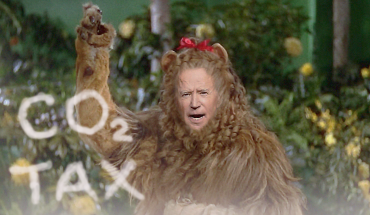BY JACE WHITE
Everyone knows that it’s possible to have too much of a good thing, but can we ever have too little of a bad thing? If gluttony can get the better of us as we consume more and more of what we love, perhaps our passions can get the better of us as we try to rid the world of what we hate.
Pollution of any kind is bad. In an ideal world, we wouldn’t have pollution. However, we don’t live in an ideal world. We live in a world constrained by reality where everything has a cost. Pollution has a cost, but so does getting rid of it. For example, we could live in a world of significantly reduced pollution by eliminating half of the world’s population. That is what it looks like to pursue a goal at all costs. I assume that most of us would not prefer this apocalyptic option, which means that pollution is not something we want to reduce at all costs.
If we know that we want to reduce pollution, and we know that there are limits to what we will do in order to accomplish that goal, the next step is to determine what those limits are. Unfortunately, this is easier said than done. How can one person decide what the optimal level of pollution is? Democratic Socialist Alexandria Ocasio-Cortez provided her answer in the form of her “Green New Deal” which, among other things, proposed reducing The United States’ carbon emissions to a net zero value in the next 10 years. When politicians substitute their judgments for the judgments of the market, they are counteracting a decision made collectively by millions of individuals.
The interaction of supply and demand forces determines how much of an economic good is produced. When the wants and needs of consumers change, or the ability of producers to make something changes, the amount produced eventually adjusts to reflect this new information without the need for any one person to make a decision. This is important because no one person could make a decision in a market with millions of consumers and thousands of inputs going into the production of everything we buy.
Occasionally, there are market failures, when the market produces an amount of something that is higher or lower than what everyone would want. Often the only thing we know in these cases is whether more or less of something ought to be produced. In the case of pollution, we know that we want less of it, but we don’t know how much less and how much we are willing to pay for it.
Some policy proposals take into account the inability of central planners to make effective decisions about how to solve complicated economic problems. A carbon tax would increase the incentive people and businesses have to cut their carbon footprint. This would allow businesses to decide what parts of their carbon emissions to target first, based on what will be the least costly to accomplish. Businesses themselves are better equipped to make decisions about costs than people far away in Washington.
Climate change poses a threat to human well-being, but so do many potential solutions to climate change. The more money we spend on reducing our carbon emissions, the less money we have to spend on schools, roads, medicine, food, housing, police and numerous other things that also improve our lives. When critics question the viability of different parts of the Green New Deal, its proponents often respond by saying that no cost is too high if it means saving the environment. While this may be an effective rhetorical tactic, as a policy-making philosophy it is nothing more than a willful ignorance of reality. Reality is the reason we want at least some pollution—not because we like it, but because there are some prices that just aren’t worth paying.





